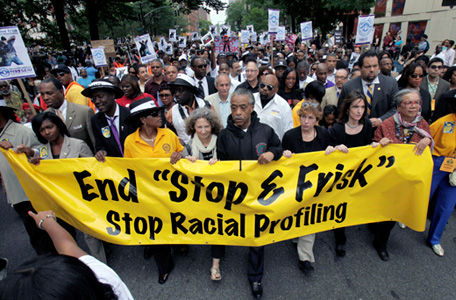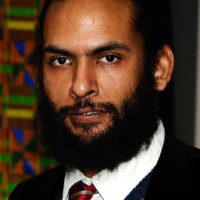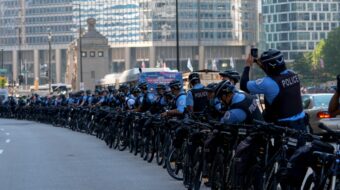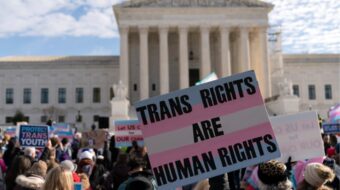
NEW YORK – Zakiyah Ansari, a Brooklyn mother of eight in the borough’s Brownsville section worries for her soon-to-be-a-teenager son, because he is tall. Because of the boy’s height, people think he is older than he actually is, she explains. “I think about the humiliation these young men go through, being stopped and frisked, and ask myself, ‘When will it be my son’s first time?'”
Ansari, a leader in New Yorkers for Great Public Schools, says she wonders “when we will get to a point where parents don’t have to be afraid.”
Ansari is far from the only one who rejects the stop-and-frisk policy in place in New York. A federal judge ruled last Monday that the stop-and-frisk tactics of the New York Police Department violated the constitutional rights of minorities, calling into question the biggest element in Mayor Bloomberg’s so-called crime-fighting operation.
In the last round of Democratic primary election debates all of the candidates were eager to state their opposition to New York Police Department’s stop-and-frisk-policy.
“We need a mayor who doesn’t have the attitude that if you get some of them (the criminals with this policy) then it’s worth it. Easy to say when it’s not your child,” declared Ansari.
The judge, Shira A. Scheindlin, ruled that the Police Department resorted to “a policy of indirect racial profiling.” Cops were routinely stopping blacks and Latinos, she said, who would not have been frisked if they were white.
The judge did not call for an end to stop-and-frisk but rather for a federal monitor to oversee “reforms,” including the use of cameras worn on clothing by patrol officers. The judge also said that stop-and-frisk, as implemented in New York, demonstrated a widespread disregard for the Fourth Amendment, which protects against unreasonable searches and seizures by the government, as well as the 14th Amendment’s equal protection clause.
Brownsville, where Ansari lives, is one of the neighborhoods that has been subjected to the worse of the policies cited by the judge. Unlike Bloomberg and others, however, Ansari has difficulty compartmentalizing the problems faced by her neighborhood and refuses to separate the issue of crime in the neighborhood from other problems the area is facing.
“Not only is Brownsville a high crime areas,” she says. “It is also a neighborhood where, after 12 years of Mayor Bloomberg’s corporate restructuring of public education only 11 percent of the students graduate from high schools in college- ready condition.
“It’s also the home of Kings County Hospital, a hospital that will be greatly overburdened if plans go ahead for the closure of its neighbor, the Brooklyn Interfaith Medical Center.
“No one should live in fear of being stopped whenever he leaves his home to go about the activities of daily life.” wrote the judge.
And daily life for the people in Zakiyah’s neighborhood is anything but easy. Many of her neighbors are minimum to low wage employees of corporations, she says, that have profited millions while they avoid paying taxes. “These are systemic issues,” she insists, “including the lack of educational opportunities, the lack of jobs and the lack of overall hope – it’s a cycle we can break, but we are not going to break it by dismantling the safety net and putting up a dragnet.”
Photo: In this June 17, 2012, file photograph, Rev. Al Sharpton, center, walks with demonstrators during a silent march to end New York’s “stop-and-frisk” program. Seth Wenig/AP










